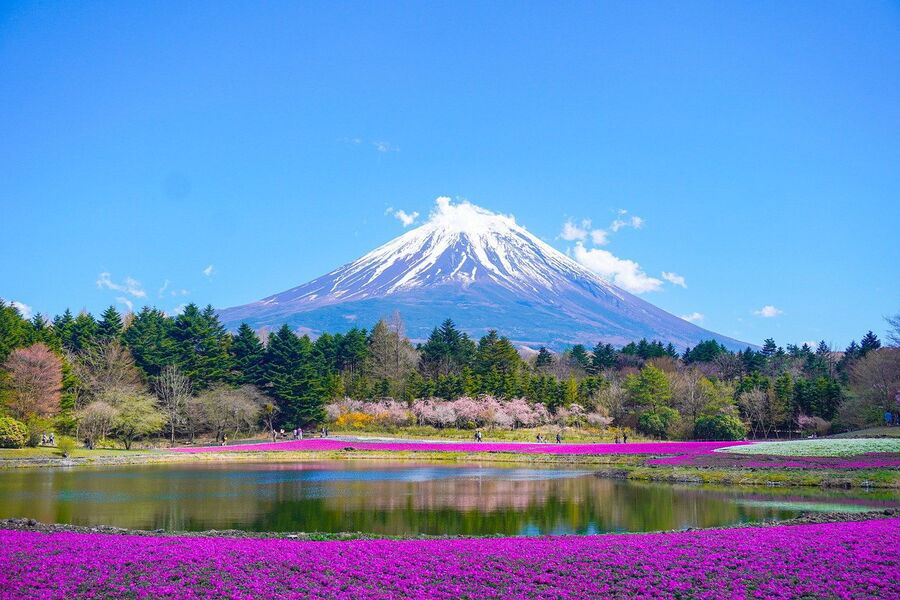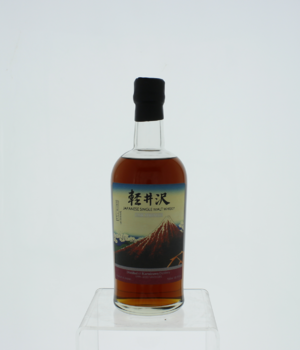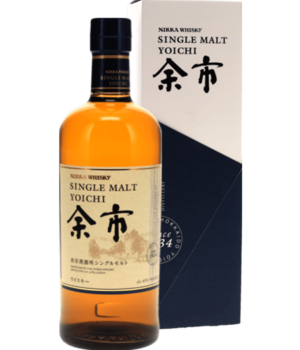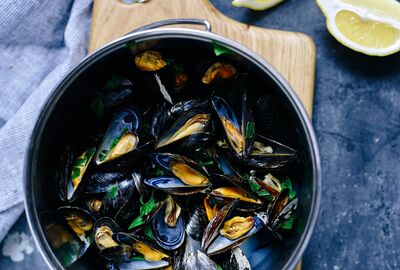
Japanese whisky has experienced explosive growth in recent years, and it is now a popular choice among whisky lovers worldwide. From lovers of single malts to collectors looking for rare bottles, Japanese whisky is increasingly on the radar. But what makes these whiskies so special? In this blog, we dive into the world of Japanese whisky and discover why brands such as Nikka, Hibiki, Yoichi and Chichibu have captured the hearts of whisky fans.
Japan's attention to detail and craftsmanship
One of the main reasons behind the rise of Japanese whisky is the uncompromising craftsmanship applied at every step of the production process. The Japanese are known for their precision and dedication to perfection, and this is clearly reflected in their whisky production.
Japanese distilleries have learned much from the Scotch whisky tradition, but have refined and adapted those techniques to their own climate and environment. Masataka Taketsuru, the founder of Nikka and one of the pioneers of Japanese whisky, studied in Scotland and brought the art of whisky making to Japan. His influence can be seen in whiskies such as Nikka, Yoichi, and Miyagikyo, which excel in balance, subtlety and complexity.
Innovating and experimenting
While Japanese whisky makers respect tradition, they are also not afraid to experiment. Many Japanese distilleries use a wide range of casks to mature their whisky in, including ex-bourbon casks, sherry casks and even rare mizunara oak casks, which lend unique, refined flavours of sandalwood and spices to the whisky.
Distilleries like Chichibu, founded by Ichiro Akuto, have built a reputation for experimenting with different cask types and maturation conditions. The Ichiro's Malt brand is an excellent example of how Japanese whisky dares to tread new paths, gaining much admiration from whisky lovers.
Perfection in blending
Japanese whisky has become world-famous for their mastery of whisky blending. Whereas many whisky drinkers in the West often prefer single malts to blends, Japan has shown that blended whiskies can be exceptionally complex and refined. A good example of this is Suntory's Hibiki whisky, which consists of a harmonious blend of different malts and grain whiskies, matured in various casks. The result is a smooth, layered whisky with notes of honey, dried fruit and spices.
Hibiki's success lies in perfectly balancing different components, something Japanese blenders excel at immensely. This has changed the perception of blends in the global whisky community and further propelled the popularity of Japanese whisky.
Increased availability and international recognition
Although Japanese whisky was once hard to find outside Japan, it has become increasingly accessible in the international market in recent years. This is partly due to growing demand and increasing production capacity of distilleries. Brands such as Nikka and Suntory have actively focused on exports, which has ensured that their whiskies are now available all over the world.
The international recognition of Japanese whisky has also been an important factor in its rise. In 2015, the Yamazaki Single Malt Sherry Cask 2013 won the title "World's Best Whisky" at the World Whisky Awards, an achievement that shook up the world and drew attention to the exceptional quality of Japanese whisky.
Rarity and exclusivity
Japanese whiskies are also known for their rarity, which makes them highly sought after by collectors. Distilleries such as Karuizawa, which has since closed, have produced bottles that now sell for astronomical sums at auctions. Karuizawa's rare whiskies are now legendary and considered holy grail bottles for collectors.
The exclusivity of some Japanese whiskies has undoubtedly contributed to their cult status. Bottles from distilleries like Chichibu and Ichiro often sell out quickly and their limited editions create a sense of urgency among collectors and whisky lovers looking for something special.
The unique flavour profile of Japanese whisky
What further distinguishes Japanese whisky is their unique flavour profile. Unlike the robust, smoky whiskies of Islay or the fruity, rich whiskies of Speyside, Japanese whiskies tend to be refined, elegant and subtle in their flavour. They offer a balanced mix of delicate fruit notes, floral aromas, a slight spiciness and sometimes a hint of smoke, depending on the casks used.
Take for instance Yoichi whisky, produced by Nikka, which is known for its subtle smoke notes, briny influences and complex fruity undertones. On the other hand, Miyagikyo offers a softer, fruitier style with an almost floral elegance, proving that Japanese whisky is capable of embracing a wide range of flavours.
The unique Coffey Malt: a Japanese innovation
One of the most unique whiskies from Japan is the Coffey Malt whisky, named after the "Coffey still" used in the distillation process. This is not a new whisky technique, but it is an unusual method for producing malt whisky, and it is something Japanese distilleries like Nikka have embraced.
The Coffey still, invented by Aeneas Coffey in the 19th century, is a continuous still that was traditionally used for making grain whisky. Unlike traditional pot stills used for single malts, a Coffey still produces whisky in a more efficient and gentle manner. What sets Coffey Malt whisky apart is that it is made from 100% malted barley, but is distilled in a Coffey still rather than in a pot still.
Flavour profile
The result is a whisky with a surprising combination of rich, malty flavours and a smooth, almost creamy texture usually more associated with grain whisky. You can expect notes of vanilla, caramel, tropical fruit and even a hint of spice. The Coffey Malt has a full, smooth mouthfeel, making it a unique experience for whisky drinkers familiar with traditional single malts.
Nikka is one of the pioneers of this style, offering the Nikka Coffey Malt, which is gaining appreciation worldwide for its innovative approach and unique flavour profile. The success of this whisky has further enhanced the reputation of Japanese whisky, showing how innovation and tradition can go hand in hand.
The Coffey Malt is an excellent example of how Japanese whisky stands out on the world stage by applying traditional techniques in an innovative way. With its smooth texture and rich flavour, it offers a new dimension to the concept of malt whisky, and is a must-try for any whisky lover looking for something special.
Japan offers a perfect blend of tradition, innovation and craftsmanship
The increased popularity of Japanese whisky stems from a combination of factors: a deep respect for craftsmanship, the ability to combine traditional methods with innovative techniques, and a unique flavour profile that appeals to aficionados worldwide. Brands like Nikka, Yoichi, Hibiki and Chichibu have taken the whisky world by storm with their beautiful, thoughtful creations, and it seems their rise is far from over.
Whether you are just starting to discover Japanese whisky or are already a seasoned aficionado, the Japanese whisky world offers a plethora of refined, elegant and sometimes rare gems. So the next time you find yourself in front of a whisky cabinet, it might be time to take your taste buds on a journey to the Land of the Rising Sun. Cheers!

Blogger
The text you've just read was (partially) created with the help of ChatGPT . Although every story we write is thoroughly proofread and corrected with the help of ChatGPT, it can always happen that an error has crept in here and there that you, as a seasoned connoisseur, do not agree with.
Therefore, if after reading this blog you do not agree with certain statements that are put forward, please do not hesitate to let us know via service@broekmans.be so that we can further edit this text.
It is a conscious decision to explicitly mention that this blog article was written with the help of AI, as nothing is more valuable than the work, preparations and efforts made by "real" bloggers when they publish blog articles on our webshop (or elsewhere) that are not supported by AI.
















